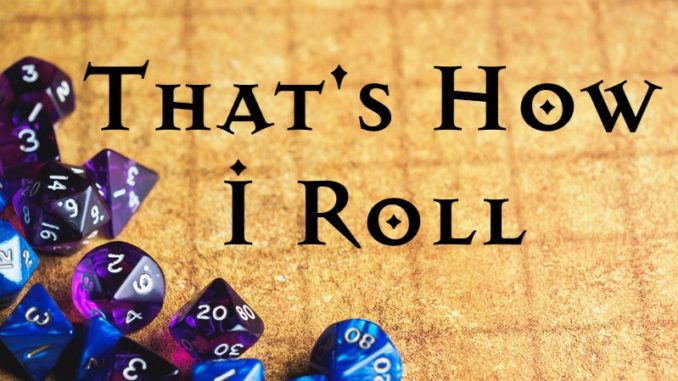
Alignment: one of the most controversial components in traditional fantasy RPGs. Alignment is supposed to be a system that both describes and prescribes a PC’s ethical/moral values and supposedly gives role-playing guidance. All too often, however, PCs’ alignments are either 1) ignored completely, or 2) used as an excuse to be an asshole. Neither of those outcomes are desirable, and as a result many groups choose to drop their games’ alignment systems altogether. Thankfully, however, I’ve discovered an alignment system that attempts to avoid both undesirable outcomes in an RPG called Monsters & Magic.
 Monsters & Magic (M&M) is an OSR fantasy game that attempts to re-imagine the original D&D from 1974 by using modern game design insights and sensibilities. The result is a nice mix of new-school and old-school. Not only that, it’s also highly-compatible with older D&D materials. I don’t want to go into a ton of detail about the game itself, but I do highly encourage everyone to check it out. What’s important to note for the purposes of this article, though, is the fact that M&M introduces a new and innovative Alignment system that solves many of the problems found in more-traditional alignment systems.
Monsters & Magic (M&M) is an OSR fantasy game that attempts to re-imagine the original D&D from 1974 by using modern game design insights and sensibilities. The result is a nice mix of new-school and old-school. Not only that, it’s also highly-compatible with older D&D materials. I don’t want to go into a ton of detail about the game itself, but I do highly encourage everyone to check it out. What’s important to note for the purposes of this article, though, is the fact that M&M introduces a new and innovative Alignment system that solves many of the problems found in more-traditional alignment systems.
Like many editions of D&D, M&M uses a two-axis alignment system of Good vs. Evil and Law vs. Chaos, resulting in nine possible alignments. Unlike many editions of D&D, however, M&M also provides concrete mechanical effects to go along with an otherwise narrative alignment system. There are three main mechanical components to the system: action bonuses, alignment focus, and alignment drift.
The first way M&M provides mechanical consequences and incentives for its alignment system is through action bonuses. For certain checks, when a character’s alignment is relevant and role-played well, the GM may grant a PC a small bonus to their check. The game highlights mental/social combat checks as particularly fitting for these bonuses, but other types of checks can apply at the GM’s discretion. Action bonuses provide an incentive for players to roleplay the consequences of their characters’ alignments instead of ignoring them.
The next way M&M ties alignment to mechanics is through Alignment Focus (AF). This mechanic has to do with a behavior that reinforces a PC’s alignment. The book provides examples of AFs for each of the nine alignments. The example AF for Lawful Neutral, for instance, is “Enforce the law whether it’s fair or not.” Good candidates for an AF are behaviors or decisions that require PCs to make a difficult choice that may or may not be in their and/or their party’s best interest, as in the previous example. The GM is the final arbiter of whether or not a particular behavior or decision counts toward’s a PC’s AF. Every time a PC performs an action that counts towards their AF, they receive 1 Alignment Focus Point (ALP). Accruing 10 net AFPs allows the PC to become an “Alignment Champion.” Becoming an Alignment Champion provides a PC with both material and narrative benefits, including social influence over other characters that share their alignment, and the ability to use their AFPs as Hero Points to re-roll checks as well as other benefits. If the PC ever falls below 10 AFPs, they cease to be an Alignment Champion.
The flip side to Alignment Focus is Alignment Drift. Alignment Drift (AD) is a behavior that pushes a PC towards a different alignment. The example AD given for Lawful Neutral is “You have to be harsh – everyone’s always trying to take advantage.” Such a behavior would push a Lawful Neutral PC towards becoming Lawful Evil. A good AD should be a behavior that is tempting for a PC to perform, but that does not conform to their current alignment. Every time a PC performs an action that counts towards their AD, they receive 1 Alignment Drift Point (ADP). If a PC ever accrues 10 net ADPs, they cease to be their current alignment and become the alignment indicated by their AD.
As a final note, it should probably be obvious based on the descriptions that AFPs and ADPs cancel each other out. Each PC’s AFPs and ADPs are totaled and the largest value is subtracted from the smallest. However many points of either AF or AD remain are then added to the PC’s net points of that type – similar to the way the Morality system works in FFG Star Wars’ Force & Destiny line.
So there you have it. Monster & Magic’s alignment system is a cool and unique way to handle alignment. I find this system to be superior to those found in various editions of D&D and other games; it makes a PC’s alignment both mechanically and narratively relevant, and introduces concrete consequences for acting both to and against one’s alignment. I highly recommend giving the system a try, whether in M&M proper or as a house-rule for another game. If you do, I encourage you to leave a comment below or shoot me an e-mail to let me know whether or not it worked for you and your group. I’d also love to hear from you if you can think of any other ways to improve the traditional alignment system. See you next week!
Do you have thoughts or questions about the article or suggestions for future content? Leave a comment below or drop me a line at jtdimino@d20radio.com.
